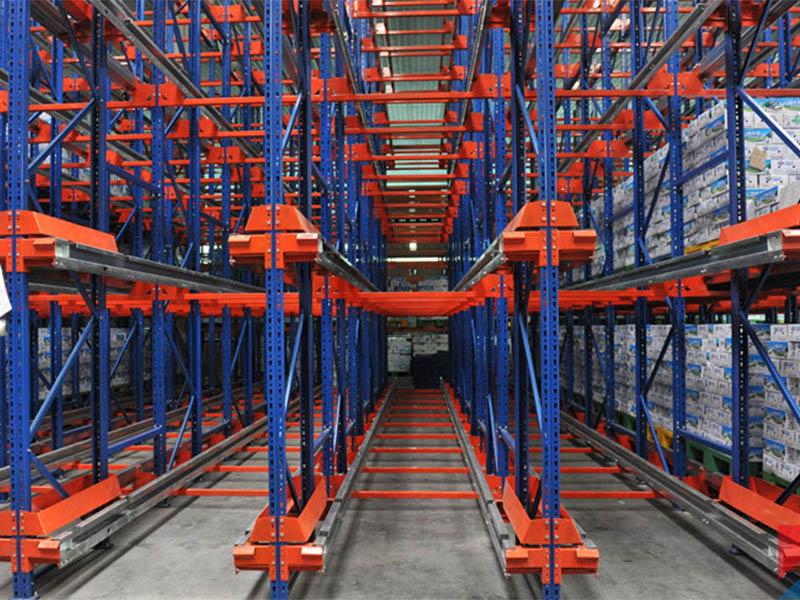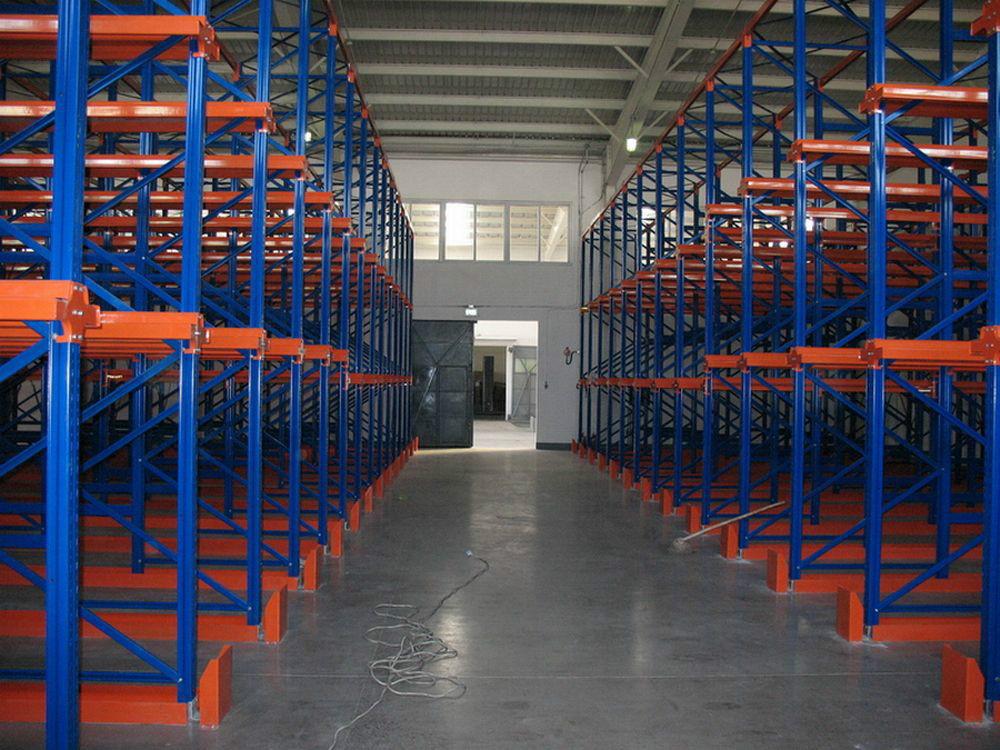Pallet racking systems are the backbone of countless warehouses and distribution centers, enabling efficient vertical storage and maximizing space utilization. However, these towering structures, when improperly managed, present significant safety hazards. Forklift collisions, overloaded beams, damaged components, and poor installation can lead to catastrophic collapses, causing severe injuries, fatalities, massive product loss, operational downtime, and costly legal liabilities. Prioritizing pallet racking safety isn't just a regulatory requirement; it's a fundamental commitment to protecting your most valuable assets: your employees and your business continuity. This comprehensive guide delves deep into five critical pillars of pallet racking safety, providing actionable insights to create a safer, more secure warehousing environment.

1. Design, Specification, and Professional Installation: The Critical Foundation of Pallet Racking Safety
The journey to robust pallet racking safety begins long before the first beam is bolted. A system's inherent safety is determined by its design and installation:
Engineered Design & Load Calculations: Every pallet racking system must be specifically engineered for its intended use. This involves meticulous calculation of:
Uniformly Distributed Loads (UDL): The maximum weight each beam level is designed to hold across its entire length.
Point Loads: The maximum weight concentrated on any single point of the beam.
Seismic & Environmental Loads: Accounting for earthquake risk, wind loads (if applicable), and other environmental factors based on location.
Pallet & Load Specifications: Design must consider the size, weight, and type of pallets and the specific loads being stored (e.g., dense vs. light but bulky items). Never exceed the manufacturer's stated load capacities.
Site-Specific Considerations: The rack design must integrate seamlessly with the warehouse environment, considering:
Floor Flatness and Load-Bearing Capacity: Uneven floors compromise stability; floors must support the concentrated point loads of the rack uprights under maximum weight.
Ceiling Clearance and Sprinkler Systems: Adequate clearance is needed for sprinkler heads and potential future modifications.
Forklift Aisle Widths: Aisles must be wide enough for safe maneuvering of the specific forklifts used, reducing collision risk.
Professional Installation by Certified Personnel: This is non-negotiable for pallet racking safety. Certified installers:
Follow the manufacturer's exact specifications and engineered drawings.
Ensure uprights are perfectly plumb and beams are level and correctly seated.
Use the specified hardware and torque all bolts to the correct specifications.
Securely anchor the racking to the floor as per the design requirements. Proper anchoring is crucial for stability, especially in seismic zones or for taller systems.
Load Application & Configuration Notice (LACN): The installer should provide this critical document, detailing the approved configurations, load capacities, and any restrictions. This is the blueprint for safe operation.
2. Safe Loading Practices and Adherence to Load Capacities: Preventing Structural Failure
Even the best-designed rack will fail if loaded incorrectly. Adherence to load limits and proper loading techniques is paramount for pallet racking safety:
Strict Adherence to Load Capacities: This is the cardinal rule. Exceeding the UDL or point load capacities specified on the LACN dramatically increases the risk of beam deflection, failure, or even total collapse. Load capacities must be clearly posted on each bay.
Understanding Beam Deflection: All beams will deflect (sag) slightly under load. This is normal within designed limits (typically specified by the manufacturer, e.g., 1/8" or 1/10th of the span). Permanent deflection exceeding these limits indicates overloading or damage and requires immediate attention – the beam must be unloaded and replaced.
Proper Pallet Placement:
Pallets must be fully supported by the beams beneath them, resting on at least three beam levels for stability.
Pallets must not overhang beams excessively (follow manufacturer/pallet specs).
Ensure pallets are in good condition; damaged pallets can collapse or snag during placement/retrieval.
Consideration of Dynamic Loads: The impact force from a forklift placing or removing a pallet adds stress beyond the static weight. Smooth, controlled forklift operation is essential.
3. Comprehensive Inspection Programs: Proactive Damage Identification
Regular, systematic inspections are the eyes and ears of your pallet racking safety program, allowing you to identify and address issues before they escalate:
Types of Inspections:
Frequent Visual Checks (Daily/Weekly): Conducted by trained operators and warehouse staff. Focus on obvious damage in active picking/pathing areas – look for dents, bends, misaligned beams, leaning uprights, or dislodged components.
Formal Inspections (Monthly/Quarterly): Performed by trained in-house personnel (e.g., supervisors, safety officers) using a detailed checklist. Cover the entire rack system systematically.
Expert Inspections (Annually/Bi-Annually): Conducted by a qualified rack inspector (e.g., SEMA Approved Rack Inspector - SARI in the UK, or equivalent certified professionals). This is a thorough, top-to-bottom assessment documenting all damage and providing repair/replacement recommendations.
Critical Areas to Inspect:
Uprights: Look for dents, bends (especially near the base or connections), cracks, tears, significant corrosion. Pay close attention to the "critical zone" – typically the bottom 200mm/8 inches and areas around beam connectors. Measure plumb.
Beams: Check for dents, bends, cracks, excessive permanent deflection (measure sag), damaged beam end connectors (hooks, locks, bolts), and secure seating on uprights.
Beam Connectors: Ensure bolts are present, tight, and undamaged. Check connector arms for bending or cracking.
Footplates & Anchors: Verify anchors are tight, not sheared or pulled out. Check footplates for damage or bending.
Bracing & Frames: Inspect diagonal and horizontal braces for dents, bends, or detachment.
Decking & Wire Mesh: Look for damage, excessive sagging, or dislodgement.
Protection Equipment: Check the condition and security of column guards, rack protectors, and end-of-aisle guards.
Detailed Documentation: Every inspection, regardless of level, must be documented. Record the date, inspector, findings, actions taken, and follow-up requirements. This creates an audit trail and ensures accountability.

4. Damage Assessment, Repair Protocols, and Replacement Standards
Finding damage is only the first step; knowing how to assess and rectify it correctly is vital for ongoing pallet racking safety:
Immediate Action: If significant damage is found that poses an immediate collapse risk (e.g., severely bent upright, detached beam), the affected bay must be immediately offloaded and cordoned off until repairs are made. Do not use it!
Assessment by Qualified Personnel: Only personnel trained and authorized by the rack manufacturer (or a SARI/equivalent) should assess damage and determine the appropriate repair or replacement strategy. DIY repairs are dangerous and usually invalidate warranties and engineering approvals.
Understanding Repair vs. Replacement:
Minor Damage: Small dents (within manufacturer tolerances, often specified in depth and location relative to connectors) might be acceptable without repair, but must be monitored.
Repairs: Some damage can be repaired using manufacturer-approved methods and components. This often involves installing specialized repair kits (e.g., sleeve inserts for dented uprights, reinforcement plates) designed and tested for that specific rack type. Never attempt to straighten bent components – this weakens the metal.
Mandatory Replacement: Significant damage typically requires component replacement. This includes:
Uprights with dents exceeding manufacturer tolerances, bends, cracks, or tears.
Beams with excessive permanent deflection (beyond L/180 or manufacturer spec), dents in the bottom flange near the center, cracks, or damaged connectors.
Damaged beam connectors or braces.
Using Approved Components: Always replace damaged components with parts specified by the original rack manufacturer for that specific system. Mixing components from different manufacturers or systems compromises structural integrity and pallet racking safety.
Post-Repair Inspection: Any repaired section must be formally inspected and approved (preferably by an expert) before being reloaded.
5. Comprehensive Training and Safety Culture: Empowering Your Team
Technology and procedures are only effective if the people interacting with the system understand and value pallet racking safety. Training and culture are the human firewall:
Forklift Operator Training (Mandatory & Ongoing): Operators are the most frequent point of contact with racks. Training must cover:
Safe maneuvering in aisles, emphasizing awareness and caution near racking.
Proper load handling techniques to minimize impact (no "ramming" loads into position).
Accurate placement and retrieval to avoid hitting beams or uprights.
Understanding load capacities and the dangers of overloading.
Procedures for immediately reporting any impacts or observed damage.
Warehouse Staff Training: All employees working near racking need awareness training:
Recognizing basic signs of rack damage (dents, bends, leaning).
Understanding the importance of not altering racks (e.g., climbing, removing components).
Knowing procedures for reporting damage or unsafe conditions.
Awareness of designated pedestrian walkways and safe zones.
Management & Supervisor Training: Leaders need to understand the risks, inspection requirements, damage protocols, and the importance of allocating resources for maintenance and repairs. They set the tone for safety culture.
Creating a Reporting Culture: Foster an environment where reporting damage, near misses, or unsafe practices is encouraged, not punished. Make reporting procedures simple and accessible. Prompt reporting is crucial for preventing incidents.
Clear Signage & Communication: Post load capacity signs prominently. Use floor markings for aisles, pedestrian paths, and rack protection zones. Clearly mark off-limits areas around damaged racks.
Regular Safety Meetings: Reinforce pallet racking safety messages, discuss incidents or near misses (internally or industry-wide), review inspection findings, and solicit feedback from the team.
Pallet racking safety is not a one-time project; it's a continuous, integrated process requiring commitment from all levels of an organization. By investing in proper design and installation, enforcing strict loading practices, implementing rigorous inspection routines, adhering to qualified repair protocols, and fostering a pervasive safety culture through comprehensive training, warehouses can drastically mitigate the risks associated with these essential storage systems.
The consequences of neglecting pallet racking safety – human tragedy, financial ruin, reputational damage – are simply too severe to ignore. Proactive investment in safety measures, while requiring resources upfront, pays dividends in preventing catastrophic loss, ensuring operational continuity, protecting your workforce, and achieving true peace of mind. Make pallet racking safety the unwavering cornerstone of your warehouse operations.







